Multipurpose Drinking water and irrigation Program for the municipalities of Batallas, Pucarani and El Alto, Bolivia.
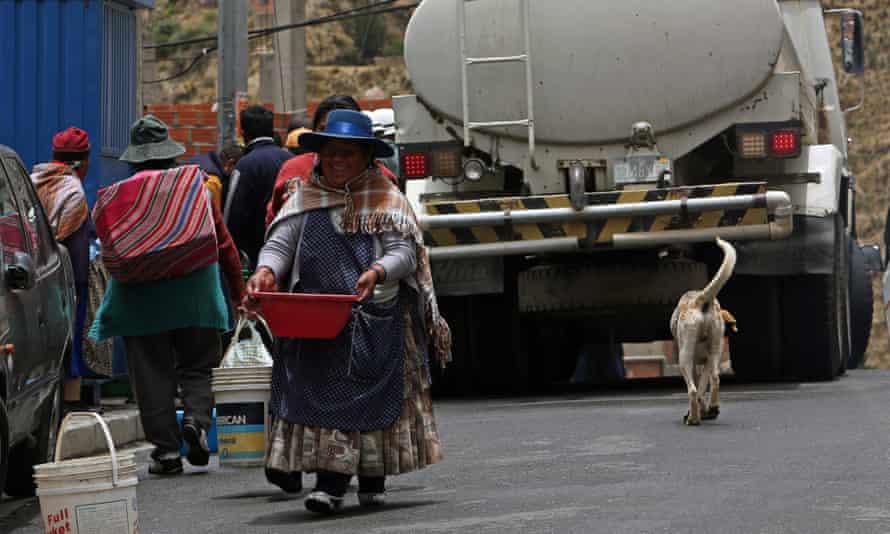
Summary
This solution aims to increase water availability in the municipalities of El Alto and Batallas, Bolivia, through promotion of integrated resource management and improved irrigation systems.
This solution was one of the three components of the Bolivia’s Strategic Program for Climate Resilience (SPCR), a program designed under the leadership of the government (Ministry of Environment and Water and Ministry of Planning) and endorsed by the Climate Investment Funds (CIF) Pilot Program for Climate Resilience (PPCR). Its implementation on the Bolivian Andean Plateau is led by the Inter-American Development Bank.
The overall objective of this project is to improve drinking water service delivery in the municipality of El Alto and access to water in the municipalities of Pucarani and Batallas, taking climate change resilience aspects into account. Specific objectives are to: increase water availability for the water supply system of El Alto and the communities of the municipality of Batallas, improve and expand the use of the irrigation systems in the municipalities of Pucarani and Batallas, and promote integrated water resources management and sustainable use of natural resources in the context of climate change. For this, two irrigation projects were financed: one for the Jacha Jauira watershed and another one for the Khullu Cachi watershed. Financed items of both projects include:
- Construction of new conveyance pipe networks, thereby increasing current water transportation efficiency
- Repair of existing channel systems
- Repair, expansion and construction of water intakes
- A modernized irrigation sector for Alto Peñas
- Delivery works and pressure reducing valves
- Headwater dams
- Comprehensive Technical Assistance for efficient water use and increased agricultural productivity with climate change adaptation.
Overview
- Location:
- Implementation sites:
- Single country
- Multiple locations
- Mountain region:
- The Andes
- Province:
- Larecaja, Los Andes, and Pedro Murillo at the La Paz Department in the Andean Plateau
- Site locations:
Batallas, Pucarani, and El Alto municipalities
- Solution scale:
- Ecosystem type(s):
- Solution type(s):
- Sector(s):
- Climate impact(s) addressed:
- Impact time-scales:
- Co-benefits:
- Implementation timeline:
- 2015 - 2023
Solution details
Main beneficiaries & outcomes
The main beneficiaries are local communities’ habitants (including indigenous households; in total around 185,000 households) thanks to increased drinking water access, as well as 6,600 farmers (most of them with low incomes) on account of more sustainable irrigation services in agricultural and pasture areas.
To ensure that women are not excluded from the project two gender indicators are included on the results framework, they are meant to assess the participation of women in water use and health education campaigns and the implementation of productive program initiatives for women.
Planning and implementation
The Ministry of Environment and Water (MMAyA) through the Environment and Water Executing Agency (EMAGUA) is the entity in charge of the implementation of the program. The Multipurpose Program Management Office (MPMO) was established under EMAGUA’s organizational structure for the execution of the program and is responsible for all fiduciary obligations.
As an important step before starting the project, the MMAyA conducted negotiations with the communities with prior irrigation and direct consumption rights over involved watersheds. In consideration for the use of a given amount of available water from those watersheds, the Ministry undertook to make an investment to improve and enlarge the existing irrigation systems through their modernization and to provide 13 communities from the municipality of Batallas with drinking water. Stakeholder engagement took the form of:
- Workshops with local communities as part of the consultation process mandated by IDB’s environmental and social safeguards. These were also carried out in indigenous languages.
- Discussions with government ministries (Ministry of Environment and Water and Ministry of Planning) and agencies of the program including a risk analysis workshop to identify risks to the program and mitigation measures.
Finance
The solution was financed by the Inter-American Development Bank (IADB) with a loan of US$62 million, a grant facility out of the Strategic Climate Fund (42.5 US$ million) and a US$4.37 million grant from the Nordic Development Fund. Additionally, a local contribution of 24,145,136 US$ was also perceived.
Total cost: 133,015,136 US$
A cost-benefit analysis was conducted using the Internal Economic Rate of Return (IRR) and net Present Value (NPV) indicators. Results demonstrated feasibility with an IRR of 15.73% and NPV of US$29.2 million.
Innovation
Innovation was important in the design of the solution, particularly for the modernization of irrigation systems that optimize water transport and use efficiency. In addition, existing dams were redesigned to maximize the amount of water to be captured from precipitation and watershed runoff. A hydrometereological monitoring system will also be deployed in the intervened watersheds to better understand impacts of climate change on watersheds hydrological cycle.
Performance evaluation
The executing agency is in charge of preparing reports on the progress and results of activities. The monitoring and evaluation scheme includes:
- Procurement Plan
- Multi Year Execution Plan
- Annual Operating Plans
- Annual verification of compliance with the targets set in the Results Matrix
- Six-monthly reports containing: activities carried out during that period, progress made in their implementation, problems encountered and how to solve them.
The execution of that period and the planning for the following semester will be evaluated. The six-monthly reports should be sent to the Ministry of Environment and Water (MMAyA) to consolidate all the information related to the implementation of the Strategic Program for Climate Resilience (SPCR), and to issue the reports required by the SCF subcommittee.
Furthermore, consultants are planned to be hired to perform an interim assessment report to be submitted 90 days after the date on which 50% of the loan resources were disbursed, and a program final assessment, which will begin six months before the conclusion of the program. For the evaluation of irrigation projects a quasi-experimental methodology of Differences-in-Differences combined with Propensity Score Matching will be used. Additionally, an experimental economics study will also be conducted to compare COTEMU’s regulation and design alternatives.
Long term project sustainability and maintenance
Water user associations will be responsible for the operation of irrigation works and the Municipal Autonomous Governments of Batallas and Pucarani will be responsible for the maintenance of such works. To that end, an agreement was executed with the Ministry of Environment and Water (MMAyA).
Capacities for design and implementation
Knowledge
Knowledge was a highly important factor during the solution’s design, especially to assess its feasibility. For example, results provided by an Environmental and Social Impact assessment (ESA), and Technical, Economic, Social and Environmental Assessment (TESA) served as the initial base.
Moreover, the solution includes the implementation of a Comprehensive Technical Assistance Plan (CTA) with the objective to provide water users’ knowledge of the future irrigation system in terms of works, water distribution, operation and maintenance and common organization, among others. It also incorporates educating women, children, and youth about issues of water use and health, focusing on 13 selected rural communities.
Technology
The proposed works for this solution are the response to the comparison of all available technology options studied during the feasibility analysis with a medium and long-term view. It was thus relevant for the planning and design of the project. Additionally, the use of technology was employed to modernize irrigation systems.
Political / Legal
Existing political aspects regarding the water resources and irrigation sector were very important for the adoption of the solution. First, The State’s Political Constitution stipulates that water is a right to life. The water and sanitation sector is one of the strategic priorities of the national government, for this, one of the targets of the 2025 Patriotic Agenda is that all men and women in the country are provided with drinking water service. Additionally, the Municipal Autonomous Governments and Department Autonomous Governments have the duty to prepare, finance, and execute water resources and irrigation projects, and to define their plans and programs.
Moreover, the Strategic Program for Climate Resilience in Bolivia of which this solution is part, was designed to support the full implementation of the country’s National Mechanism for Adaptation to Climate Change.
Institutional
The close collaboration of the Inter-American Bank with local government is a fundamental aspect for the solution.
In the other hand, to take full and exclusive responsibility of the execution of the program, the Multipurpose Program Management Office (MPMO) was established within the organization structure of the Water Executing Agency (EMAGUA). Coordination relationships between MPMO and other EMAGUA’s agencies, as well as the Ministry of Environment and Water (MMAyA is nonetheless maintained.
Socio-cultural
As prior irrigation and consumption rights from the watersheds to be used belonged to some local communities, negotiations were carried out between them and the Ministry of Environment and Water. The agreement to improve, enlarge and modernize irrigation systems in the area after these negotiations benefited both the government and local habitants. Furthermore, two consultation processes were carried out in indigenous languages in order to provide information about the characteristics, scope and impacts of the program and the mitigation measures planned for those possibly affected.
To involve communities and raise awareness among the rural population, one of the solution’s aims is the education of women, children and youth about issues on water use and health.
Outlook & Scalability
Barriers and adverse effects
The program’s Environmental and Social Impact Assessment identified several environmental and social risks, including impacts on habitats and natural resources, economic displacement and impacts on the livelihoods of several indigenous communities. To address those risks, the creation of side plans played an important role for the implementation of the solution. These included an Environmental and Social Management Plan, a Social Compensation and Management Plan and an Integrated Watershed Management Plan with climate change considerations. Equally, a Resettlement Plan was developed to address economic displacement through community involvement. And the Comprehensive Technical Assistance intends to address the risk of limited adoption of irrigation technologies by the communities.
Transformation and future outlook
One of the most relevant supports for fundamental change comes from the building of knowledge and awareness among local communities and minority groups as it is in the case of indigenous people and women. In addition, the solution copes with gradual climate change (increasing drought conditions) through the use of modern technology in the irrigation systems and by the creation of dams to stabilize glacier runoff as their melting accelerates.
Potential for upscaling and replication
There is not yet information available regarding the possible upscaling of this solution. However, given its nature as a pilot program, the project looks to support efforts to capture lessons resulting from the adaptation activities, as well as international best practice examples for its potential replication in other parts of the country. If upscaling or replication is to be done, it is recommended to further study and take into consideration future climate scenarios.
This solution supports the country’s National Mechanism for Adaptation to Climate Change.
Finally
Acknowledgments
This survey was elaborated based on official project’s documentation available through the Climate Investment Fund website. Findings contained in the “Building transformative institutional adaptive capacity: Assessing potential contribution of PPCR to build a climate-resilient water governance framework in Bolivia” report created in collaboration by the Inter-American Development Bank (IDB), the Climate Investment Funds and the University of Geneva were also employed. The solution description reflects the authors’ views and not those of the IDB or collaborators. Julia Aguilera Rodriguez filled in the information, while Simon Allen revised the solution description.
Contacts of key institutional partners involved with the solution planning and implementation
Coordinator for PPCR Bolivia : Alfred Grunwaldt ([email protected]), Cristina Mecereyes ([email protected])
Key references/links
Allen, S., Iwanciw, J. G., Rodriguez, L., Stoffel, M., Grünwaldt, A., Brusa, F., & Bocco, M. J. (2020). Building transformative institutional adaptive capacity: Assessing potential contribution of PPCR to build a climate-resilient water governance framework in Bolivia. (p. 99). Inter-American Development Bank. http://dx.doi.org/10.18235/0002226
IDB. (n.d.). Cover Page for Project [Program Approval Request]. Inter-American Development Bank.https://pubdocs.worldbank.org/en/406471531529103003/1999-XPCRBO007A-Bolivia-Cover-Page.pdf
Orallana, E., Grünwaldt, A., Garzonio, O., Bocco, M. J., Muñoz, R., García, J., López, L., Mugruía, J. M., Ríos, A., Iju, A., Escudero, C., Cuba, A., Baza, E., Castro, M. E., Collins, S., Peláez, G., Vidaurre, P. J., & Nerdelli, P. (n.d.). Multipurpose Drinking Water and Irrigation Project for the Municipalities of Batallas, Pucarani and El Alto [Operation Development Proposal]. Inter-American Development Bank. Retrieved December 5, 2021, from https://pubdocs.worldbank.org/en/898461531529107376/1999-XPCRBO007A-Bolivia-PID.pdf



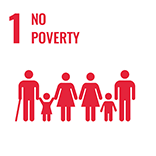
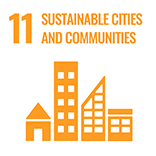
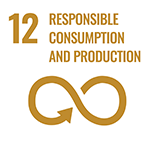
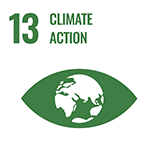
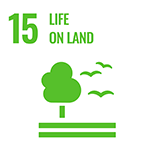
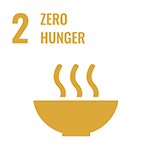
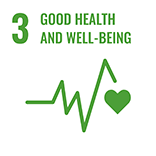
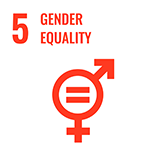
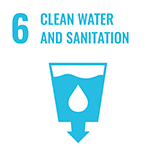
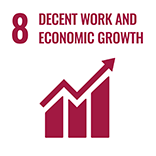
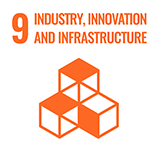
(0) Comments
There is no content